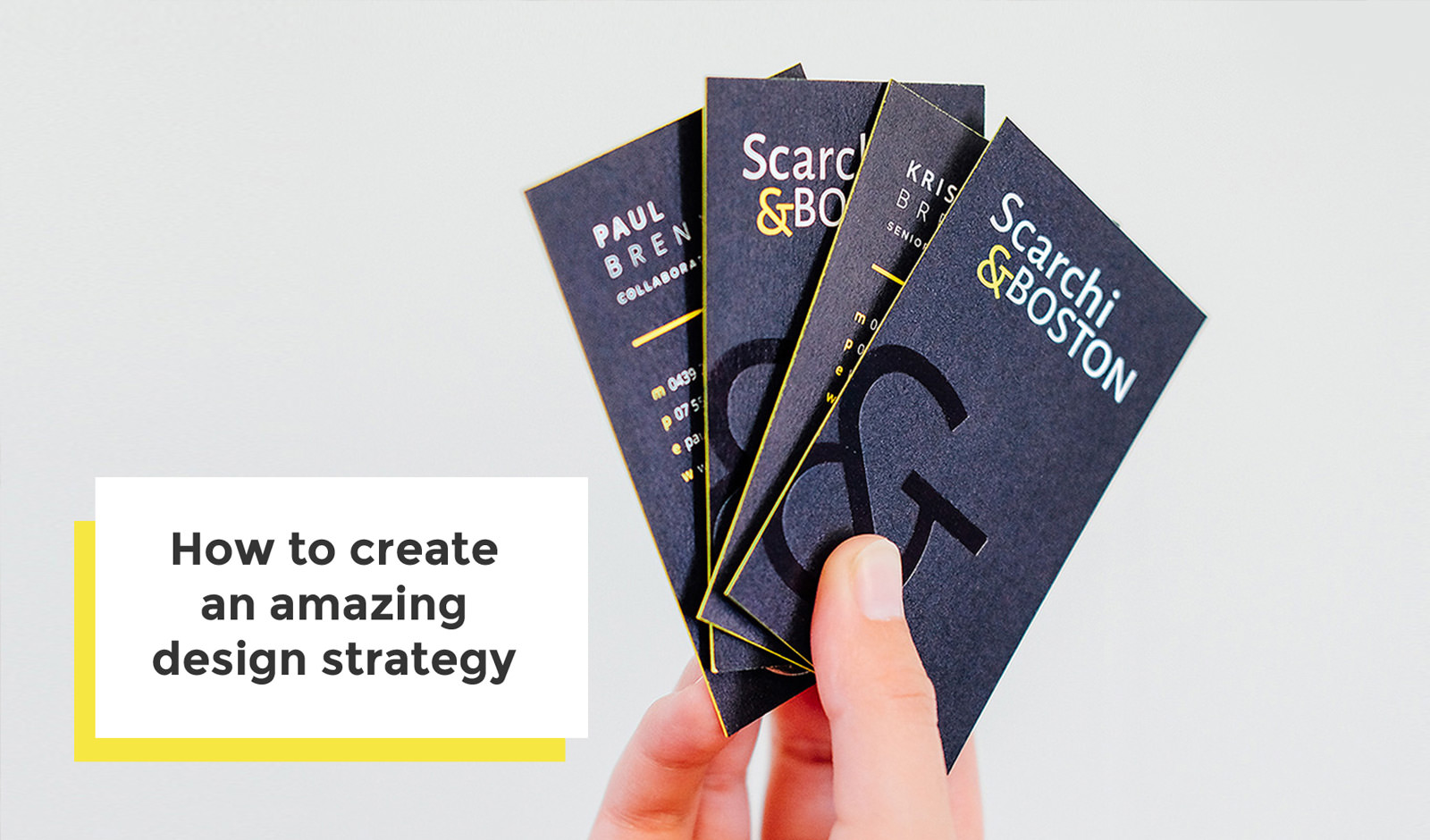
How to Create An Amazing Design Strategy
Design is much more than pretty pictures and a nice colour scheme. Essentially, design should be a calculated and purposeful expression of the brand and what it stands for. So how does this relate to the success of your business?
Whilst business and design strategy ultimately intersect, their core purposes are somewhat different and discerning the two is important when considering execution and the overall success of business goals.
Business strategy relates to budgeting, product scope/opportunity and market objectives. However, design strategy takes this to the next level by synthesizing business strategy with a creative concept that embodies the ultimate goals of the company and it’s clients and reiterates the core ideals of the brand. Design is a business tool like any other, though it speaks more than just words and allows customers to create an emotional connection with the intangible entity that is your brand.
Design strategy pertains to what we are designing and why, two essential questions to be asked before considering how it should be executed.
How to create an effective design strategy
Devising a design strategy is fairly simple, although it requires some honest introspection and a little research. Here are some simple steps to help you create an amazing design strategy:
1) Define your brand
Who are you? What do you stand for? What is unique about your brand (compared with the many others available)? Defining your brand may be more difficult than you think but is an important part of creating your design strategy – you need to know where you are before thinking about where you’re headed!
2) Specify your goals
One of the initial steps in creating an effective design strategy is to consider your ultimate goals – what are you hoping to achieve? Without clear direction of what it is you are trying to accomplish, it can be very difficult to create a strategy that is both purposeful and effective – you need to know where you’re headed before you can find your way there!
3) Research and analysis
Yes, research can be a little tedious, however it is a crucial part of understanding all aspects of your audience, your competition and the market in which you operate. As a business, you need to understand where you sit within the marketplace and how you are perceived by customers and competitors alike. You also need to fully understand the wants and needs of your audience – not just who they are. Audience demographics (including their goals) have a major influence on the type of design that will be appropriate and thus, adequate importance should be placed on this seemingly mundane task.
4) Find the gaps – and fill them!
Through your research, what kinds of gaps have you noticed? What customer needs are not currently being met? What existing problems are being faced by the industry? What new opportunities are waiting to be leveraged? The best way to differentiate yourself from your competitors is to actually be different. By creating solutions (or new solutions) to existing problems, you are ensuring the validity and exclusivity of your brand and creating a tangible point of difference for customers/potential customers to recognise.
5) Turning objectives into strategy
So now that all the important information has been ascertained, the question is how do we turn our objectives and research insights into a compelling design? There is no one-size-fits-all response to this question, however, by following a simple process, it can be quite easy to figure out. Say your company has an online publication and your ultimate goal is to increase subscription. There are a number of ways that effective design strategy can assist in accomplishing this goal. For instance, using a stark colour contrast that allows the ‘subscribe’ link to be easily locatable is one of the simplest ways to promote subscription. Another strategy would be to ‘de-clutter’ the page, so that the call-to-action (i.e. “subscription”) is clear and simple to complete. If there is too much going on in one space or our copy is too lengthy, users can get lost in the information and the call-to-action becomes a bit fuzzy. In short, ensure that all elements have been designed with a purpose – to accomplish your ultimate goals.
6) Measure results & review success
The final step in creating an effective design strategy is to measure the effectiveness of your work. This step is crucial, otherwise how else would we know if what we are doing actually works? Depending on what your goals are, you can often use analytical tools such as GoogleAnalytics to ascertain the success/failure of your design. Sticking with the previous example, subscription frequency before and after the design changes have been made would be a simple way of measuring effectiveness. Surveys and feedback (qualitative data) can also be useful where key metrics (quantitative data) are unable to be obtained.
Design is far more than just an aesthetically pleasing layout, fancy fonts or well placed images, it’s about making a seamless, positive and mutually beneficial relationship between your customer and your brand.
If you need a little help regarding your design strategy, call us or email hello@lemontreemarketing.com.au
